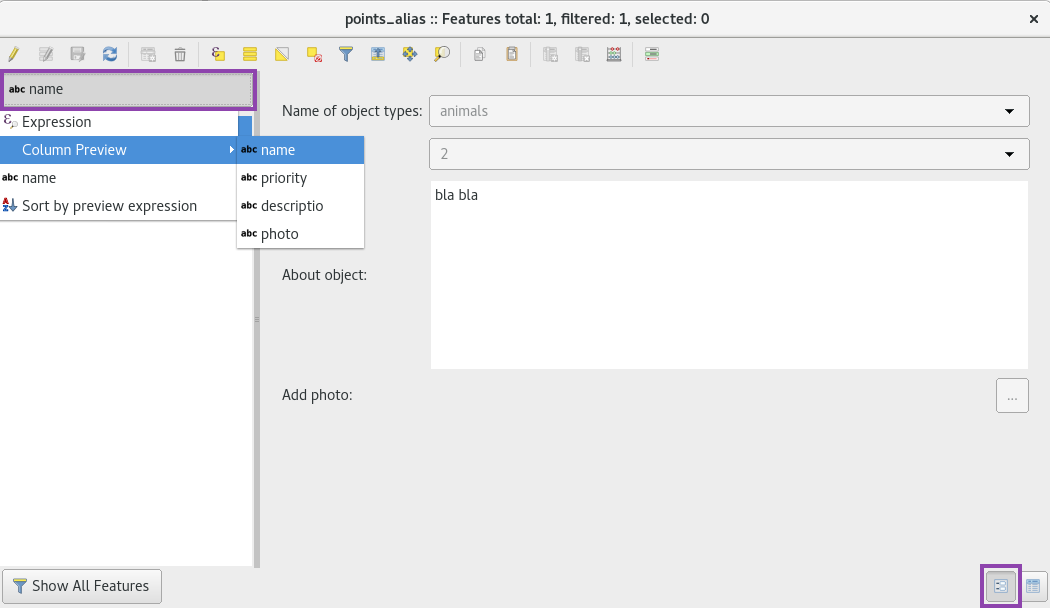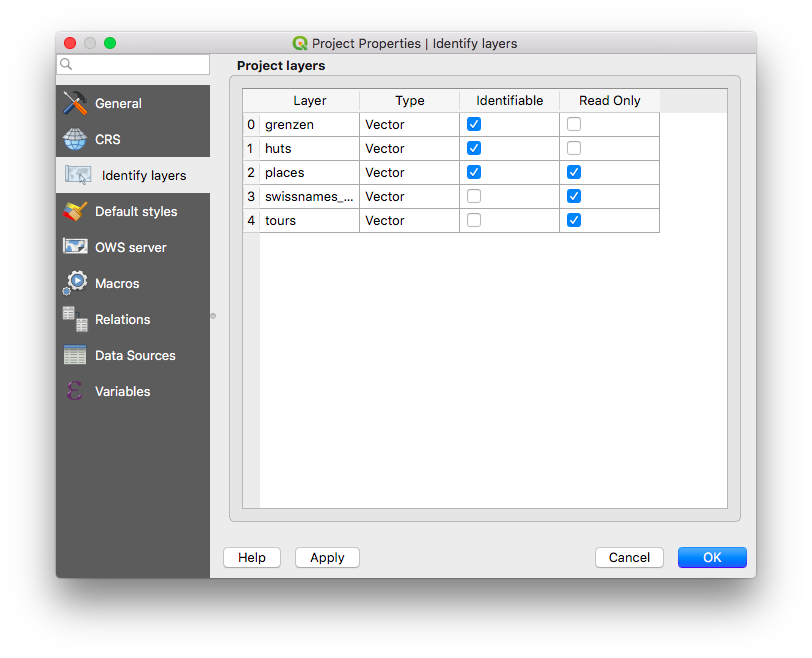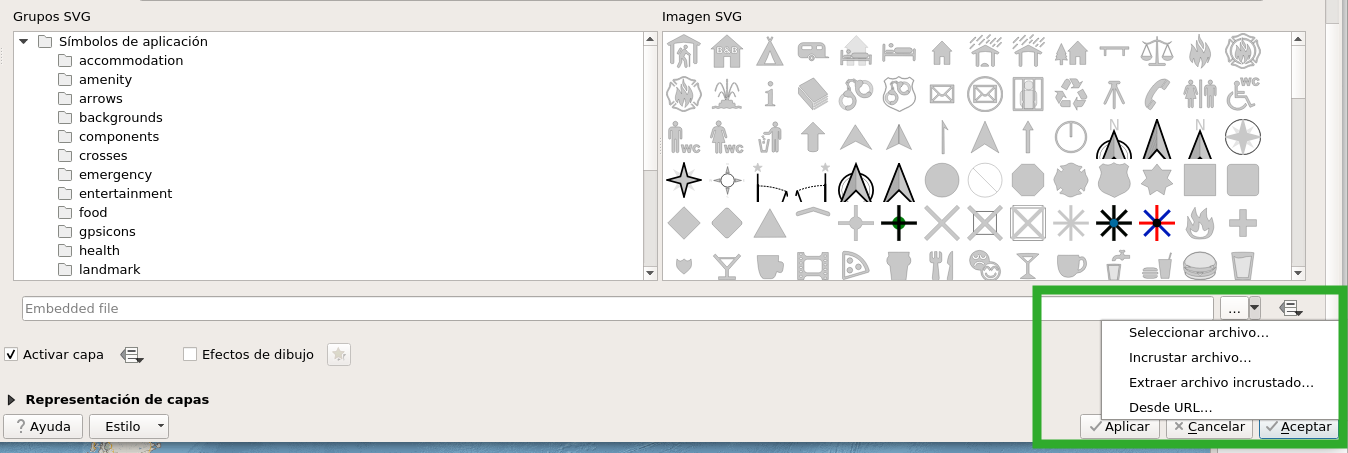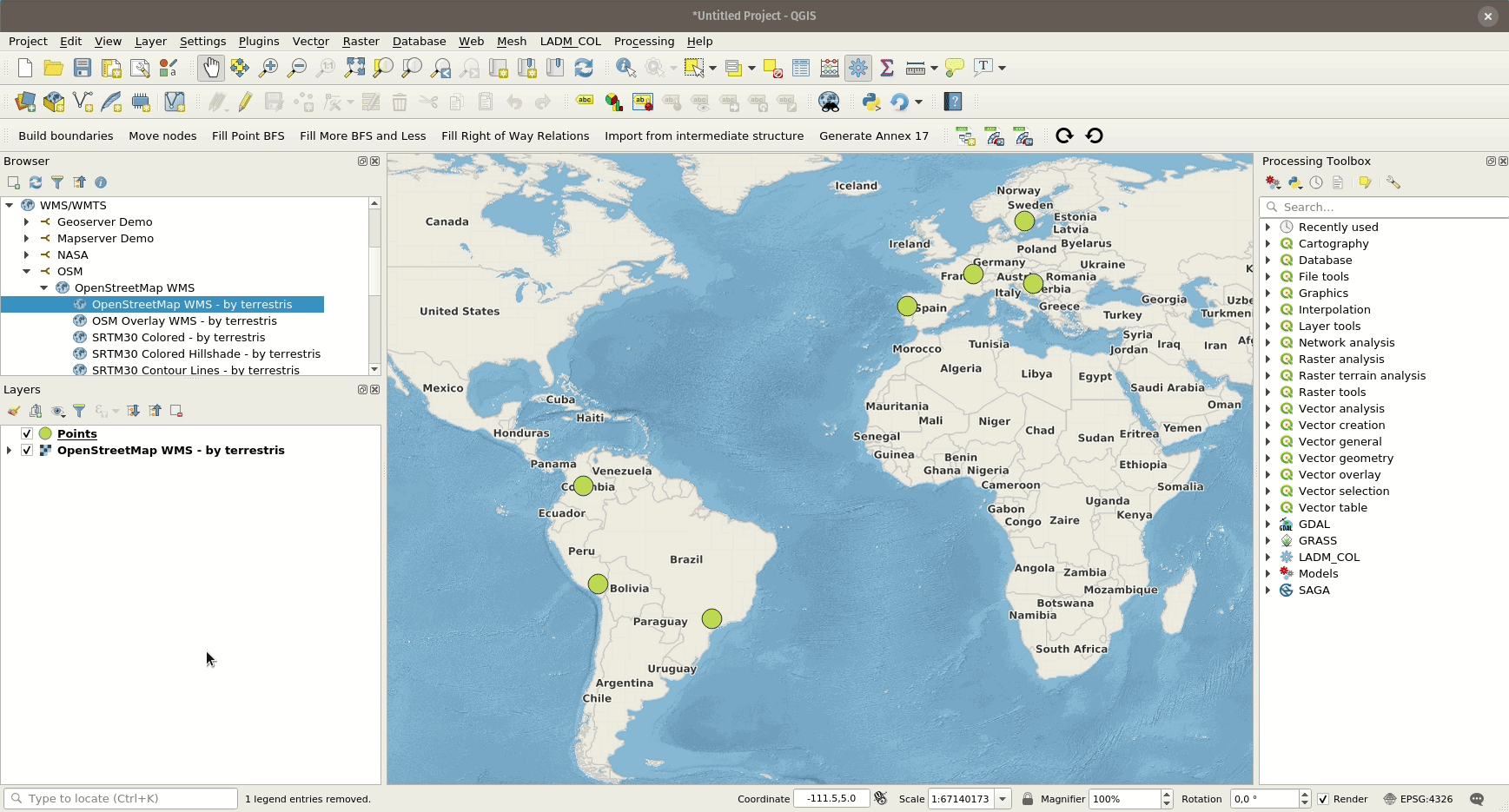Stile della mappa¶
All style settings from QGIS are directly supported by QField. This includes all renderer types like graduated, categorized, rule based, 2.5D as well as data defined symbology.
Espressione di Visualizzazione¶
Preparazione da Desktop
In QField, objects are identified with a name, which can be customized using expressions.
- Open the attribute table in QGIS and switch to the form view.
- Direct to Vector Layer Properties > Display > Attribute.
L'espressione di visualizzazione viene utilizzata anche per cercare nei layer.

Layer di sola lettura, non identificabili e ricercabili¶
Preparazione da Desktop
Some layers in a project are just there for pure visual purpose. Such layers should not show up when a user taps somewhere to identify objects.
Some other layers serve as source of information and shouldn't be modified by the user. It is possible to protect layers from editing attributes or adding and deleting features.
È anche possibile configurare quali layer sono ricercabili.
- Direct to Project > Properties... > Data Sources and activate the checkboxes to match your desired behaviour.

Utilizzo di caratteri aggiuntivi¶
Preparazione da Desktop
QField enables you to use all the custom fonts you might want and need. There are two different possibilities to register additional fonts:
Addition of fonts through the local directory
- Copy your font file (.ttf or .otf) in the directory [App Directory]/QField/fonts. Those will be made accessible to all projects and individual datasets.
Addition of fonts in subfolder of QGIS file
- Create a subfolder called fonts inside the same folder where your given project file (
.qgsor.qgz). is stored. Those fonts will only be accessible when viewing that project.
Simboli SVG personalizzati¶
Preparazione da Desktop
It is possible to embed SVG symbols directly within a QGIS project.
- Choose the layer which will support SVG symbology and open its properties dialog.
- Open the section Symbology in Properties > Symbology
- Nel Pannello dei livelli simbolo scegli Marcatore semplice.

- Change the symbol layer type in Symbol layer type > SVG marker.

- Scroll down to the bottom panel.
- Click on the right side of the file selection button to open the drop down menu.

- Select Embed File and choose the SVG file in the file selection dialog.
- Apply the changes and click OK.
